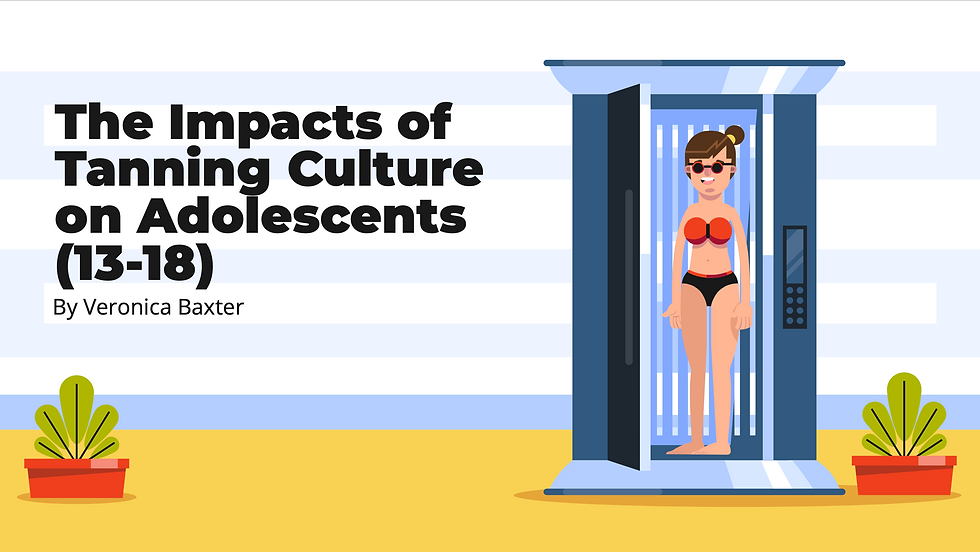Blog Post #1: The Beginning of the Journey
- Student Veronica Baxter
- Dec 2, 2024
- 2 min read
My initial guiding research goal was to diagnose a phenomenon I have been immersed in from a very young age. Over the past few decades, tanning trends and methodology have been the basis of beauty standards due to various media pressures. When I began conducting preliminary research, quickly I found a surplus of data surrounding the consequences of tanning indoors or outdoors. However, all of this made me even more interested in the “Why?”. Why has tanning proceeded to be a trend despite the obvious health deficits? This shifted my research to a more historical approach, I began examining beauty standards leading back to the early 19th century.

My final question began to form with slight sub questions and goals.How has the rise of sun and sunless tanning impacted young adults' (13-18) attitude towards their appearance and contributed to their beauty standard of others? The prior contextualization of the 1928 gap is a sub-goal that would be accomplished upon establishing the reasoning behind my research and why it would be important. Key terms used to seek out the answers to these questions online include various dermatologic, psychologic, and physiologic perspectives. I also plan on using a survey to collect data, which would instill parameters surrounding location as well as limits surrounding the number of participants I reach. The CITE SCALE (Comprehensive Indoor Tanning Expectations Scale) was developed in 2014 by Seth M Noar, PhD, et al., when examining connections between indoor tanning (UV beds) and skin cancer. The survey was conducted in a web-based cross-sectional survey among 11 sororities at a large US university. The format of the questionnaire included a 5 point response scale to various questions that assessed motivation behind tanning. At the end of the discussion, Noar stated the CITE Scale was designed to be adaptable for younger populations to expand the knowledge surrounding adverse tanning practices. My research would be best conducted through a structured survey that would be a modified version of the CITE Scale. Various questions would be administered to my population, aged 13-18, that would gather information on how their perceptions of self and others are altered by the presence of tanning. An additional factor my survey would include involves the method of tanning, or lack thereof, of the participant. Data would then be synthesized in a table similar to the one demonstrated by the American Medical Association.

Surveys have been a common approach throughout the entirety of my research. With practicality of administration, especially when developed entirely online, a survey is the most applicable method to collecting social-cultural information from participants. Sensitive subjects would also be discussed throughout my survey, themes including body image can be triggering. A survey allows participants to either not answer the question, or walk away from the survey entirely. The broader implications of my study includes a plethora of data surrounding a consumer market that is not accounted for in any previous study. This gives so much insight into the impressionability of youth and how it can transpire into consequences such as skin cancer or indulgence in risky behavior. Gaining insight into the contributors to perception of others adds to the scholarly conversation of body image in oneself and others.


Comments